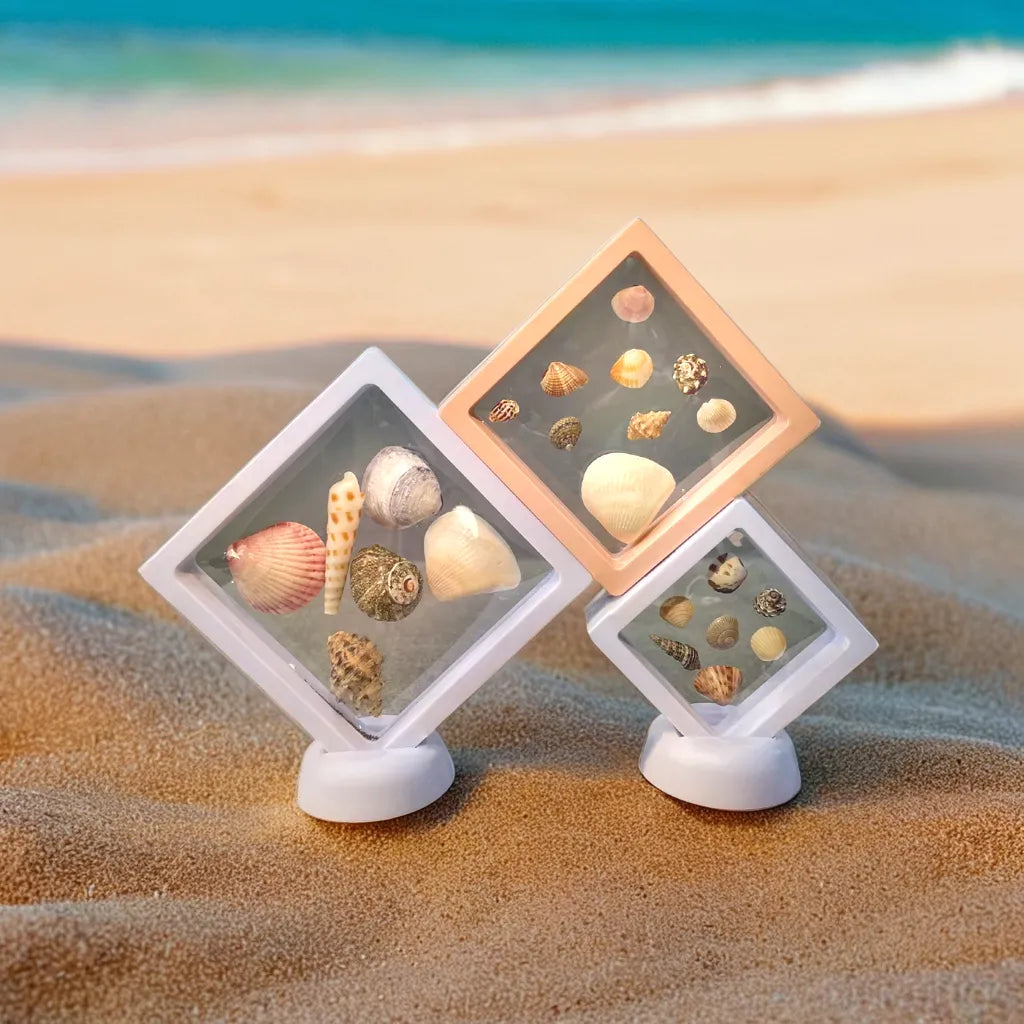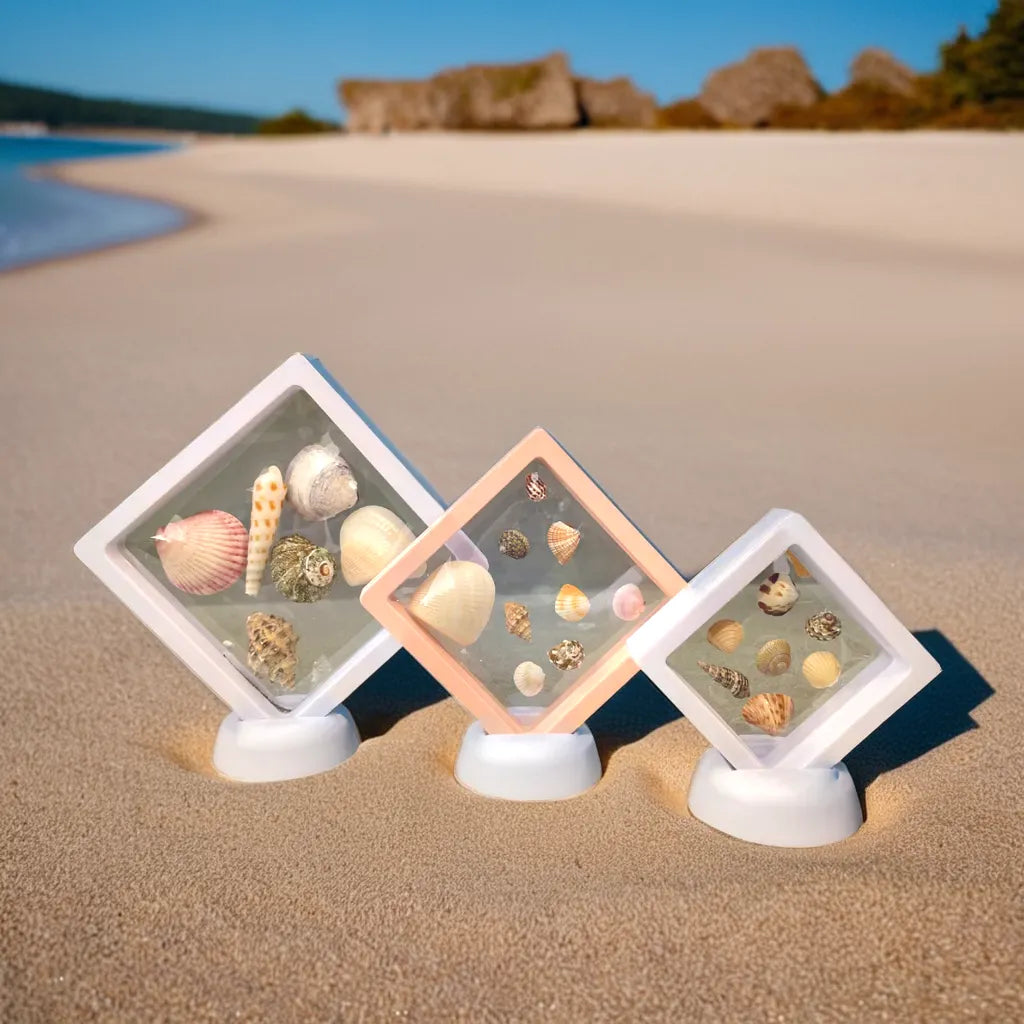
The Pear-shaped Moon Snail, scientifically known as Polinices mammilla, is a fascinating sea creature often found in sandy environments.
This unique snail can grow up to 2 inches in length and is recognized for its distinct, light-colored shell that is relatively smooth and rounded. Its habitat spans across Hawaii and the Indo-West Pacific, making it an interesting subject for marine enthusiasts and researchers alike.
Identifying the Pear-shaped Moon Snail can be easy once familiar with its features. The shell's umbilicus is filled, and its operculum is transparent brown. This species plays a role in the ecosystem, serving as a predator to other marine creatures. Additionally, its presence reflects the health of its environment.
This snail is not just a scientific curiosity; it also holds cultural and economic significance in some regions. People value it for crafting and decorative purposes, which adds to its allure. Learning more about Polinices mammilla opens a window into the diverse world of marine life.
Key Takeaways
- The Pear-shaped Moon Snail has a smooth, light shell and grows up to 2 inches long.
- It is found in sandy habitats, particularly in Hawaii and the Indo-West Pacific.
- The snail is valued for its role in the ecosystem and its use in crafts.
Identification Guide
Identifying the Pear-shaped Moon Snail (Polinices mammilla) involves examining its unique features. This section outlines how to recognize this snail, its specific characteristics, and how to distinguish it from similar species.
How to Identify a Pear-shaped Moon Snail
To identify the Pear-shaped Moon Snail, look for its
pear-shaped shell. The shell is usually light in weight. The
umbilicus, or the hollow part of the shell, is typically filled.
When observing the animal, it is important to note that the extended body can be significantly larger than the shell itself. They usually reach
up to 2 inches in size.
They are found in sandy environments along coastlines, especially in regions like
Hawaii and the
Indo-West Pacific.
Characteristics
The Pear-shaped Moon Snail has several distinct features. Its shell is usually
white, but it can also have
black or orange staining. The shell’s surface is smooth with a glossy finish.
Other notable features include a
transparent brown operculum, which covers the shell opening when the snail retracts its body. The body of the snail itself appears translucent, often giving it a contrast against the shell.
These snails can leave
tracks in the sand as they move, which is a unique telltale sign of their presence.
Comparison To Similar Species
When comparing the Pear-shaped Moon Snail to similar species, the shape and color are key differences. The
Tiger Moon Snail (Notocochlis tigrina), for instance, often has a darker shell without the typical pear shape.
Size can help in identification as well—while the Pear-shaped Moon Snail is around
2 inches, other types may be larger or have distinct features.
Additionally, depending on the location, variations in shell color can help differentiate them. Observers should take note of these subtle differences to avoid confusion with other moon snails.
Distribution & Habitat
The Pear-shaped Moon Snail, known scientifically as
Polinices mammilla, has a specific range and preferred habitats. Its distribution is largely influenced by environmental factors, including water depth and substrate type.
Where to Find Pear-shaped Moon Snail
Polinices mammilla is typically found in sandy environments. It prefers habitats in shallow coastal waters, often at depths up to 10 meters. This snail is commonly identified in the Indo-West Pacific region, including areas around Hawaii.
Key locations include:
-
Hawaii: A primary habitat for this species.
-
Indo-West Pacific: Various coastal regions support its population.
This species is not widespread but is recognized in these specific areas where sand and suitable marine conditions exist. The snail is often less common at greater depths.
Cultural & Economic Importance
The Pear-shaped Moon Snail, or
Polinices mammilla, holds significance in both culture and local economies. Its unique features and habitat make it a subject of interest for various communities and researchers.
The Pear-shaped Moon Snail in Culture
In many coastal areas, the Pear-shaped Moon Snail is admired for its distinctive shell. Local artisans sometimes use these shells in jewelry and decorative items. Communities near its habitat often share stories that highlight its role in the ocean ecosystem.
The snail's unique shape also makes it a popular subject in art and photography. It serves as a symbol of marine life and often appears in educational materials that promote ocean conservation. Schools and nature centers may use it to teach about mollusks and their habitats.
Legal Status
The Pear-shaped Moon Snail is not currently listed as endangered. However, its habitat is vulnerable to environmental changes and human activities. Local regulations often protect marine environments, which indirectly safeguard species like the
Polinices mammilla.
In some regions, there are restrictions on collecting these snails to prevent overharvesting. Such measures ensure that the species continues to thrive while allowing local communities to enjoy its beauty and economic benefits responsibly.
Pear-shaped Moon Snail Crafting
Crafting with pear-shaped moon snails can be an enjoyable activity. These beautiful shells can be used in various creative projects.
Uses of Pear-shaped Moon Snail Shells:
-
Jewelry:
- The smooth surface makes these shells ideal for necklaces, earrings, or bracelets.
-
Decorative Items:
- Shells can enhance home decor, such as in vases or as part of decorative arrangements.
-
Art Projects:
- Children and adults can use shells in collages or other artistic creations.
Basic Crafting Tips:
-
Cleaning:
- Rinse the shells gently with water. Avoid harsh chemicals to preserve their natural beauty.
-
Drilling Holes:
- Use a small drill to create holes for jewelry or hanging purposes.
-
Adhesives:
- Select strong adhesives for attaching shells to other materials. Hot glue and epoxy are good options.
Safety Precautions:
-
Sharp Edges:
- Be cautious of sharp edges when handling shells.
-
Tools:
- Use crafting tools safely and as intended to avoid injuries.
Pear-shaped moon snails provide versatile crafting opportunities. Their unique shapes and colors inspire creativity in many projects.
Frequently Asked Questions
This section provides specific answers to common questions about the Pear-shaped Moon Snail (Polinices mammilla), including its size, behavior, habitat, classification, diet, and reproduction.
What is the average size range of adult moon snails?
Adult Pear-shaped Moon Snails typically reach sizes between 2 to 4 centimeters. The common size is about 2 inches, making them relatively small compared to other marine snails.
Do moon snails engage in predatory behavior?
Yes, moon snails are known for their predatory behavior. They hunt for prey, primarily bivalves, which they consume using their specialized radula.
What habitat is preferred by moon snails?
Moon snails prefer sandy environments. They are often found in sandy bottoms, especially around coral reefs, where they can easily burrow and hunt for food.
To which animal classification do moon snails belong?
Moon snails, including the Pear-shaped Moon Snail, belong to the class Gastropoda. They are part of the family Naticidae and are classified under the order Littorinimorpha.
What is the typical diet of a moon snail?
Moon snails primarily feed on bivalves, such as clams. They use their ability to bore holes into the shells of their prey to access the soft tissue inside.
How do moon snails reproduce?
Moon snails have a unique reproductive process. They lay eggs in a spiral-shaped mass, usually in sandy areas, where the eggs can develop safely.
 The Pear-shaped Moon Snail, scientifically known as Polinices mammilla, is a fascinating sea creature often found in sandy environments. This unique snail can grow up to 2 inches in length and is recognized for its distinct, light-colored shell that is relatively smooth and rounded. Its habitat spans across Hawaii and the Indo-West Pacific, making it an interesting subject for marine enthusiasts and researchers alike.
Identifying the Pear-shaped Moon Snail can be easy once familiar with its features. The shell's umbilicus is filled, and its operculum is transparent brown. This species plays a role in the ecosystem, serving as a predator to other marine creatures. Additionally, its presence reflects the health of its environment.
This snail is not just a scientific curiosity; it also holds cultural and economic significance in some regions. People value it for crafting and decorative purposes, which adds to its allure. Learning more about Polinices mammilla opens a window into the diverse world of marine life.
The Pear-shaped Moon Snail, scientifically known as Polinices mammilla, is a fascinating sea creature often found in sandy environments. This unique snail can grow up to 2 inches in length and is recognized for its distinct, light-colored shell that is relatively smooth and rounded. Its habitat spans across Hawaii and the Indo-West Pacific, making it an interesting subject for marine enthusiasts and researchers alike.
Identifying the Pear-shaped Moon Snail can be easy once familiar with its features. The shell's umbilicus is filled, and its operculum is transparent brown. This species plays a role in the ecosystem, serving as a predator to other marine creatures. Additionally, its presence reflects the health of its environment.
This snail is not just a scientific curiosity; it also holds cultural and economic significance in some regions. People value it for crafting and decorative purposes, which adds to its allure. Learning more about Polinices mammilla opens a window into the diverse world of marine life.

























